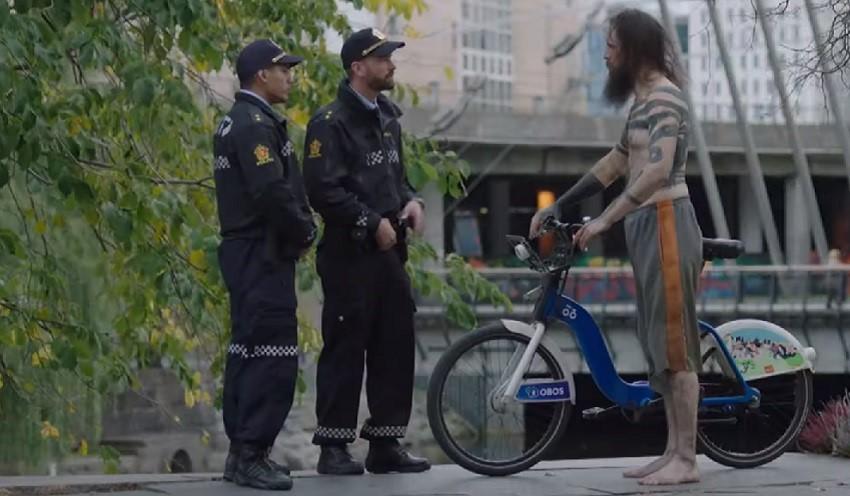
In present-day Oslo, strange flashes of blue light appear under the harbour waters, from which, floundering and gasping for air, come people from three distinct eras: the Stone Age, the Viking period, and the 19th century. Yet what starts as a world-changing event quickly becomes an everyday matter; no one understands the physics of time travel, but these time migrants still need to be processed by government departments and helped to settle in 21st century Norway. Some years later, when a “beforeigner” woman is found murdered, Detective Lars Haaland and his new Viking partner, Alfhildr Enginsdottir, must investigate the maze of complexity arising from the intersection of our world with these new migrant communities. This is the intriguing premise of HBO’s Beforeigners (2019-) created by Anne Bjørnstad and Eilif Skodvin, one of the key series of an emerging genre theorized in this issue as “New Nordic Magic.” While showing the influence of films such as Neill Blomkamp’s District 9 (2009) and series such as The Leftovers (created by Damon Lindelof and Tom Perotta, 2014-17), Beforeigners is nevertheless part of a distinctly Nordic style of contemporary fantasy emerging on screen. Why are we seeing a surge in Nordic fantasy productions, how are they competing with Hollywood’s lavish spectacles, and can we discern any signature aesthetics in this emergent genre?
In contrast to mainstream fantasy, which often focuses on building new worlds from scratch, New Nordic Magic seems equally concerned with what Alec Worley describes as “Earthbound fantasy… bound to the world of traffic jams, news reports and daily grind that we all inhabit” (2005: 83). Instead of creating independent imaginary worlds, the genre often seeks to re-enchant the everyday by seeding fantastic elements into contemporary Scandinavian environments, thus defamiliarising the real through nuanced touches rather than inventing a wholly different world. These fantastic elements often bring mythical aspects of Nordic history into the present, which not only provides a rich and coherent fantasy backdrop but also highlights the heterogeneity of national populations, thereby provoking questions about who belongs to “the people” in the Nordic nations.

Glocalised Fantasy
Fantasy is one of the most popular genres in film and television, but in the 21st century, it has largely been seen as Hollywood’s domain. Like science fiction, fantasy is concerned with world-building and in contemporary media that is associated with the expensive CGI and spectacular production design of franchises such as Peter Jackson’s The Lord of the Rings (2001-3), Harry Potter (2001-11), or Game of Thrones (2011-19). As David Butler explains, “the spectacular ‘wonder picture’ has remained the dominant model for the mainstream fantasy film, in Hollywood at least” (2009: 4). A quick glance at the data suggests that these wonder pictures have driven their competitors from the marketplace. According to the British Film Institute, which includes fantasy as a distinct genre in its statistical yearbook, fantasy films constitute a fraction of the overall film releases each year but consistently perform well above average at the box office. For example, in 2016, fantasy films amounted to just 1.5% of all releases in the UK but claimed 5.6% of the box office; in 2017, the same figures were 0.9% and 6.1%; and in 2018 they were 0.5% and 4.4%. Fantasy produces better returns than other genres but attracts fewer producers because the default assumption is that, without big-budget spectacle, it is impossible to compete with Hollywood.
This makes it even more noteworthy that Scandinavian film and television have seen a surge in fantasy productions. Scandinavian media is most famous internationally for Nordic Noir, which “emerged as a popular brand that built on the global success of Scandinavian crime fiction” (Waade et al. 2020: 2). This success was not just a question of style and narrative but also emerged from the transformation of television production and distribution in the age of streaming, which has encouraged a multiplicity of niche genres for transnational audiences. Whereas Scandinavian television had previously been dominated by public service broadcasters (PSBs), the voracious appetite of streaming services for original content has seen the growth of international co-productions and composite funding practices. Increasingly, television dramas in Nordic countries have been co-financed by global streaming services and produced with an eye to international audiences, even as local traditions continue to have a strong influence.
Kim Toft Hansen terms this process glocalisation, a concept that “offers perspectives that explain the co-existence of local, national, regional, and global players in television drama production” (2020: 84). Fantasy has struggled to gain a foothold in Scandinavian film and television culture because genre films in general have “clashed with the aspirations of cultural institutes to produce artistically and politically relevant films” (Kääpä 2018: 152). Scandinavian PSBs have traditionally favoured “double storytelling,” which Redvall defines as “an idea that fictional narratives should consist of ethical and social layers beside an entertaining plot” (2016: 34), a requirement that can bias content towards social realism. Genre, however, is a key narrative device for bridging cultural differences. International audiences may not be familiar with topical issues in Nordic society, but everyone knows the conventions of a murder mystery or horror film. As Kääpä explains, “genre is thus a means to neutralise some of the obstacles facing producers from small nation film cultures. It functions as the means that allows these producers to speak the language understood by global distributors” (2018:161). As global players like Netflix and HBO enter the Nordic market, they do not elbow local producers aside but instead establish new frameworks for collaboration, one in which the PSB emphasis on double storytelling meets the SVOD preference for internationally recognised genres, in which stories that are distinctly localised can be cast in a form that is globally accessible.
This new framework has changed the horizon of possibility for Nordic producers and helped bring fantasy into the mainstream. For example, Christian Potalivo, the producer of Danish post-apocalyptic series The Rain (2018-20), said, “We knew that no big broadcaster in Denmark would have touched it… Budget-wise and target audience-wise, it was out. We put it in a drawer until Netflix came along” (Abend 2019). The support of HBO Nordic was essential for enabling the production of Beforeigners, but the series retains the influence of double storytelling with the beforeigner concept acting as “an allegory of the refugee crisis and migration issues” (Pham 2019). The marriage of these competing impulses, the institutional traditions of Scandinavian screen production and the global audience’s expectations of the fantasy genre, help shape some of the distinctive elements of New Nordic Magic.
However, these structural changes do not offer limitless possibilities. Despite the greater audience for subtitled programming, HBO is never going to spend as much money on a Scandinavian fantasy series as it did on Game of Thrones. This creates a practical challenge for producers in a genre defined by spectacle. According to David Butler, “One of the greatest challenges facing fantasy filmmakers is the construction and portrayal of the worlds and spaces in which their narratives take place… an undertaking that has traditionally been financially prohibitive” (2009: 79). Beforeigners’ director of photography, Philip Øgaard, comments, “The big problem is we have to create a universe. I would have liked it to have been this big… but because of different things such as money, [it’s difficult]. But it’s my problem and my job [to find a solution]” (“Out of Time” 2019). Thus, while New Nordic Magic has partly emerged because of new funding opportunities, it still faces the challenge of creating fantasy on a budget. To succeed in doing so requires the development of a particular aesthetic, of which Beforeigners offers a prime example.
Re-enchanting the everyday
In Building Imaginary Worlds, Mark J.P. Wolf defines the central challenges of world-building as balancing invention, completeness, and consistency:
Without enough invention, you will have something set in the Primary World, or something quite close to it… Without an attempt at completeness you have the beginnings of expansion beyond the narrative, but… too many unanswered (and unanswerable) questions will remain which destroy the illusion… and without consistency, all the disparate and conflicting pieces, ideas, and designs will contradict each other, and never successfully come together. (2012: 34)
Hollywood fantasy specialises in constructing self-contained, independent imaginary worlds, like Tolkien’s Middle Earth or the Star Wars universe. In Beforeigners, as well as the Swedish film Gräns (Border dir. Ali Abbasi, 2017) or the Danish series The Rain, our world (the Primary World) is the setting, but it is our world transformed in some degree by the addition of a fantastic element. In Beforeigners, this element is quite similar to Darko Suvin’s definition of science fiction as “distinguished by the narrative dominance or hegemony of a fictional ‘novum’ (novelty, innovation) validated by cognitive logic” (2016: 63). However, the first season of Beforeigners makes hardly any effort to explain how its time travel novum is possible; it must simply be accepted as a fact of the fictional universe, from which all other consequences flow. As with The Leftovers, there is a single unexplained fantastic rupture in the very first scene; from that point on, the narrative becomes about working out the logical consequences of that rupture.

From a creative perspective, earthbound fantasy is less about constructing spectacular alternate worlds and more about embedding our world with small touches of the fantastic, such as restaurant signs in runic script or a Viking shieldmaiden sitting in the cancer ward of a gleaming modern hospital. The opening credit sequence indicates the show’s clever use of costume and production design. As we watch Detective Lars Haaland drive to work, he passes three lost-looking individuals in identical tracksuits walking down the main road. It is a small detail, but it stimulates the audience to fill in a lot of storyworld information; the beforeigners have clearly been given the same set of cheap government-issue clothes, which indicates that they are receiving state help but are mostly left to fend for themselves. This prompts narrative questions about how society is dealing with the beforeigners and how beforeigners have tried to adapt to living in a strange and alien time. As the car drives through the city, we see other isolated signs of this fantastic universe: an old penny-farthing bicycle, a caveman sitting in the fork of a tree, graffiti reading “Beforeigners Go Home – ok, men vordan? (but how?)”, and an old horse and cart with the rider wearing modern headphones. The show derives a lot of humour from these juxtapositions and the show rewards examining the details in the background. For example, when Haaland arrives at the Astrup Fearnley Museum of Modern Art, we see a sign for the exhibition “New Voices in Cave Art.” This kind of wry humour not only adds to the pleasure of the world but also encourages audiences to extrapolate world-building information from small details.
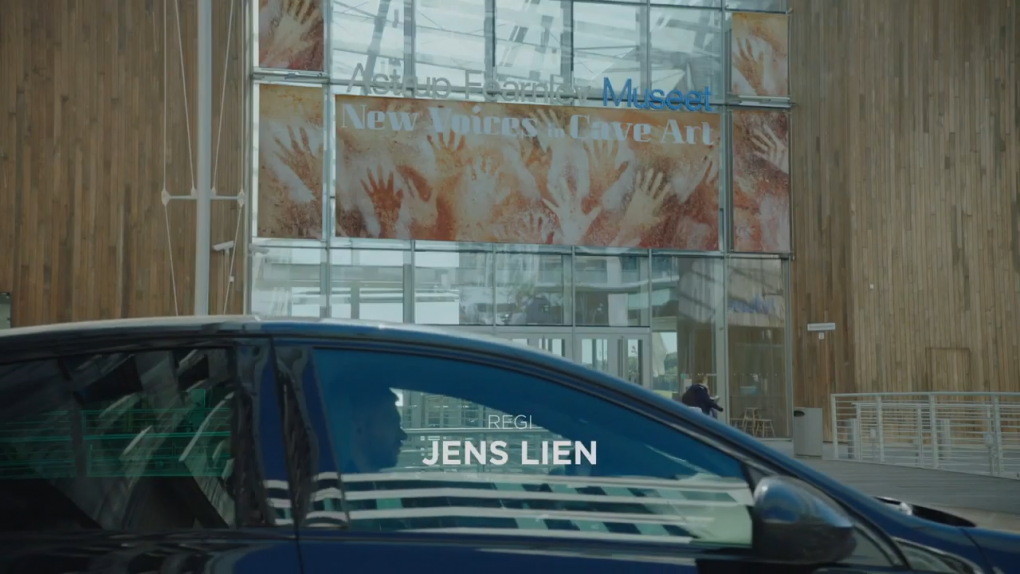
Visually, the series draws heavily on Nordic Noir aesthetics, but replaces the melancholic gloom of Nordic Noir with sly humour and brighter tones. Norwegian author Jørn Lier Horst has described Nordic crime heroes as “lone wolves living in a barren, cold part of the world” that is defined by “winter darkness, midnight sun, and immense, desolate landscapes” (2014), and Anne Marit Waade has analysed how the “gloomy landscapes, light and climate in the crime dramas draws upon a long tradition of artistic practices, philosophy, mythologies and landscape ideals within the Nordic region in which melancholy plays a significant and productive role” (2017: 384). Beforeigners draws on the traditions of Nordic Noir by showing us familiar images of lonely police detectives driving under grey skies to investigate gruesome crimes, iconic Scandinavian architecture such as the Oslo Opera House, and stylish yet understated interior design, like the conference room with all-glass walls at the police station. What will be less familiar to crime fans is the female detective stopping the car to put moss down her underwear, because it’s her time of the month and that’s just how Viking women do it. Wonderfully played by Krista Kosonen, Alfhildr combines a raw, earthy physicality with a touching naïveté about the modern world. In many ways, Alfhildr is the classic talented-but-mentally-unstable female detective typified by Saga Norén in The Bridge (2011-18) or Sarah Lund in The Killing (2007-12), except Alfhildr’s eccentricities come from her background as an 11th century Viking shieldmaiden and this is often played for humour rather than melancholy. These comic touches are augmented by a brighter colour palette than is typical of Nordic Noir. Certain scenes that in a crime drama would almost certainly be shot in a murky gloom that reflects moral decay are instead filmed in bright daylight sunshine, such as when Lars and Alfhildr raid a warehouse where beforeigner women are held captive for sex trafficking. While the compositions and subject matter are reminiscent of crime dramas, the lighter visuals help keep the emphasis on the fantastic. These strong echoes of Nordic Noir help viewers flesh out the imaginary world because the show’s vision of “reality” is the typical world of well-known crime dramas and it is against this familiar background that we recognise the show’s fantasy and humour.
Because the overall visual look draws strongly on Nordic Noir, the fantasy elements do not dominate the frame but are instead indicated by isolated anachronistic elements. The core elements of visual fantasy in the series involve people – costume, make-up, acting – and relatively inexpensive aspects of production design, such as distinctive props or background signs. A good example is the prehistoric family that lives in Haaland’s building. Although Haaland visits their apartment on a number of occasions, we never see more than what we can see through the front doorway, such as some crudely woven baskets hanging by the coat rack, but this is sufficient to suggest the condition of the rest of their apartment. The bulk of the family’s characterisation as prehistoric rests on their rough costumes, crude haircuts, and particularly Mikkel Bratt Silset’s portrayal of Nabo as someone who communicates as much by gesture as words, giving his behaviour an alien quality. Visually, the world is primarily built by suggestion and implication, rather than spectacular revelation.
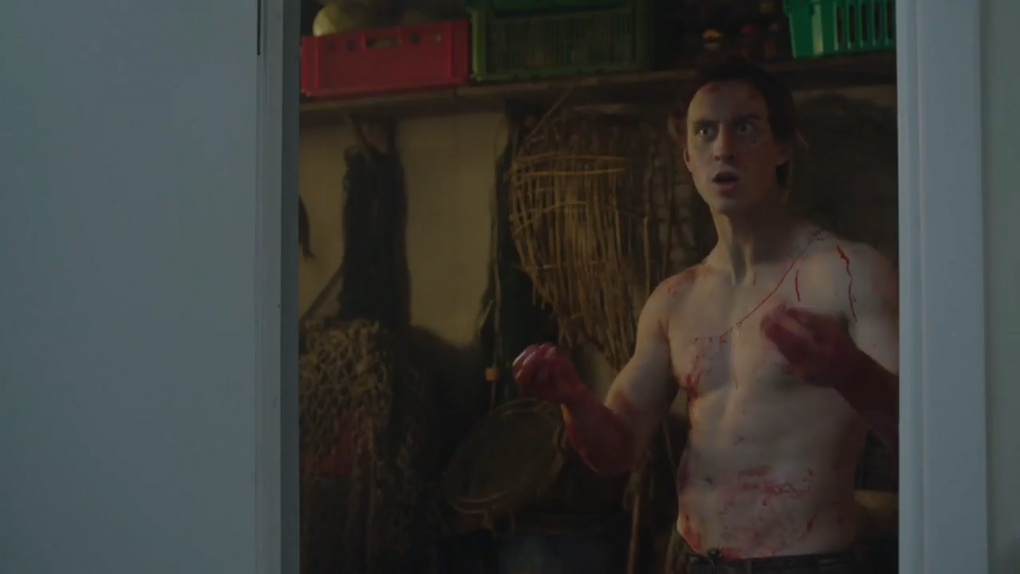
In the absence of expensive visuals, Beforeigners devotes an unusual level of attention to the soundscape, which becomes a vital conduit of world-building information. As with other sci-fi shows, news broadcasts often provide vital exposition, but what really stands out is the attention to language and accent. Co-creator Anne Bjørnstad explains, “For us it was obvious that the three immigrant groups had to have their own distinct accent and that the two oldest groups also should have their ‘mother tongue’ — and that this was as important as costume and production design” (Gjeset Schjølberg 2019). Three linguists were hired to construct the vocabulary and accent of these languages. The Old Norse in the series is “more archaic and old-fashioned than the Old Norse language we’re familiar with,” while “the cadence in the Stone Age language is flat and falling, so that it doesn’t sound like the Norwegian cadence, which ‘sings’” (Gjeset Schjølberg 2019). These differences are clearly audible, even to those who don’t speak Norwegian, while the writers also have an ear for unusual diction, such as Stone Age people using ‘the salt’ as a metaphor for the sea. HBO even has a Beforeigners dictionary site that allows audiences to explore the new vocabulary created for the show, such as “timesism” to describe negative attitudes to people from the past, or “mono-bro,” a pun that is a “timesist term to describe a young Prehistoric man.” Language plays a more prominent role in Beforeigners than in, for example, Game of Thrones, because in many scenes it is, alongside costume and make-up, the primary element of fantasy.
What this points to in terms of fantastic world-building is that New Nordic Magic often relies not on a spectacular surface but on what Jason Mittell describes as drillability, stories that “encourage a mode of forensic fandom that encourages viewers to dig deeper, probing beneath the surface to understand the complexity of a story and its telling” (2009). A tremendous asset for New Nordic Magic is that it can embed its fantasy narratives into the deep wealth of Scandinavian history and mythology. Although Beforeigners features people from the Stone Age and the 19th century, it is the Vikings who feature most prominently and this is partly because, in the popular imagination, Vikings are both historical and mythical. The flashbacks of major characters to what is presumably the Battle of Stiklestad in 1030, complete with burning cross and blood-spattered Vikings wielding swords, would not be out of place in any medieval fantasy. The series has great fun playing with the idea that the legendary Norse chieftain Tore Hund is now a bicycle courier for a food delivery company; once it becomes public knowledge that he is the same Tore Hund that killed St. Olaf, his supervisor tells him he has to be let go because “murdering saints is not compatible with Foodie’s values!” Norse history and mythology thus offer the storyworld a deep background that still fits within the fantasy genre, providing the drillability that allows the world to feel immersive yet internally consistent.
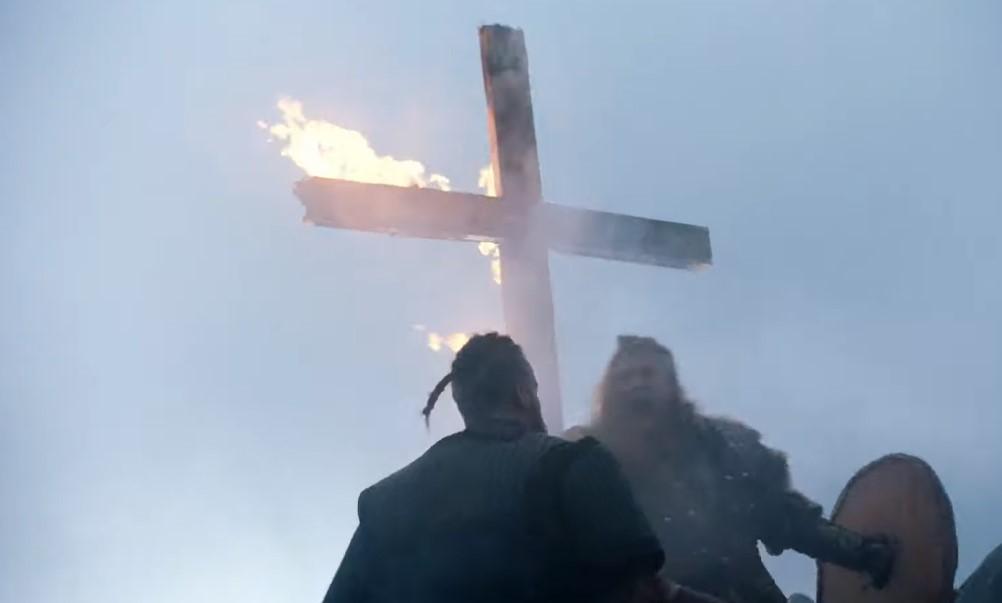
This confusion of history and mythology, like the show’s balance between sci-fi and fantasy, also allows Beforeigners to integrate elements of magic without committing to the existence of the supernatural. Shamans conduct rituals and offer startling insights but in the cryptic manner of horoscopes, allowing sceptical viewers to dismiss these magical elements if they wish. When Alfhildr and Urd enter a church at night, Alfhildr is haunted by the idea that the statue of Jesus is staring at her, until Urd confesses that she spiked Alfhildr’s food with hallucinogenic mushrooms. The most notable intrusion of magic into the storyworld is when Haaland is visited by a mysterious priest of Odin who offers vital assistance by showing the meaning of certain clues. Viewers are offered the explanation that Haaland is hallucinating, but this co-exists with the possibility that he is developing shamanistic powers. Beforeigners approaches magic in a similar vein to Tzvetan Todorov’s classic definition of the fantastic as “that hesitation experienced by a person who knows only the laws of nature, confronting an apparently supernatural event” (1975: 25). Fantastic elements intrude on the storyworld, but the viewer is always offered the possibility that there is a scientific explanation.
Michael Saler argues that seeking a rational basis for the fantastic is a creation of the late 19th century:
Fantastic virtual worlds of the imagination emerged at the turn of the century not to replicate the everyday, as was the case for realist fiction, but to complement it – to secure the marvels that a disenchanted modernity seemed to undermine, while remaining true to the tenets intellectuals ascribed to modernity at the time, such as rationality and secularism. Fantasy, cast in a rigorously logical mode replete with ‘objective’ details, was one solution to the crisis of modern disenchantment (2012: 7).
If the goal of ‘rational fantasy’ is to re-enchant the everyday rather than provide escape, then that suggests New Nordic Magic may be emerging because of a wistful desire in Nordic societies, which are often held up as models of proper governance, equality, and social trust, for a little more unpredictability and drama and excitement in daily life.
This desire may also explain the curious interplay between fantasy and Nordic Noir. At first glance, Beforeigners’ focus on yet another pair of Scandinavian detectives standing gloomily by a waterside dead body would seem odd, for these images lack the novelty one expects from the fantasy genre. Darko Suvin has argued theoretically for “the incompatibility of the plot structure of the cyclical detective tale, the conclusion of which returns the universe ‘to its equilibrium and order,’ the linear structures of the additive adventure tale, and the spiral structures of SF, the plot of which alters the universe of the tale” (2016: 79). Following this line of thought, one could argue that the detective plot of Beforeigners is a hindrance to exploring the consequences of the fantastic rupture because there is no way to return the world to normal once the crime is solved; the crime is just another result of the rupture, which can’t be fixed by the police. Yet, as Saler points out, the detective story was just as important as science fiction or fantasy in the project to re-enchant modernity; Sherlock Holmes, despite his appeals to deduction and logic, “re-enchanted the world by imbuing everything with hidden import” (2012: 117). By drawing on the detective genre, Beforeigners encourages its audience to act like detectives, scanning the screen for clues and finding the world-building details embedded in the mise-en-scène. A more active audience may remove some of the need for overtly spectacular fantasy elements as the audience is more engaged in mentally constructing the fantastic universe. Thus, making a detective plot the narrative engine of a fantasy series does not represent an ill-advised attempt to cash in on the popularity of Nordic Noir but rather a recognition that both genres attempt to add a taste of unpredictability and danger to the placid surface of Scandinavian society.

Social issues in fantasy worlds
While the show’s creators were primarily concerned with providing an entertaining fantasy world, they were also influenced by the tradition of double-storytelling, which they saw as a positive creative force. As Eilif Skodvin explains:
This is going to be a fun show; it’s a great sci-fi image of Stone Age, Medieval and 19th century people wandering the streets, and we have a little crime story within it. The fun and excitement of that idea can’t be separated from it, but you need to touch on some contemporary issues and have some meaning in it. If it doesn’t have substance, you run out of steam quite fast. (“Out of Time” 2019)
The beforeigners’ arrival creates recognizable social problems, with the emergence of “timesism” and the formation of ghettos. One of the show’s primary locations is the up-market Barcode area of Oslo; once the beforeigners start arriving, it becomes a quasi-medieval street market, with straw, farm animals, and wooden pallets scattered everywhere as beforeigners crowd the streets in their outlandish mélange of clothes from different time periods. The juxtaposition deliberately evokes a world in which upper-middle class neighbourhoods become populated by impoverished migrants. Producer Terje Strømstad explains the irony of this part of Oslo becoming a ghetto “because it was originally meant to be the prestigious luxury accommodation spot before the electrical reaction to the beforeigners’ arrival shorted the power in the district” (“Out of Time” 2019).
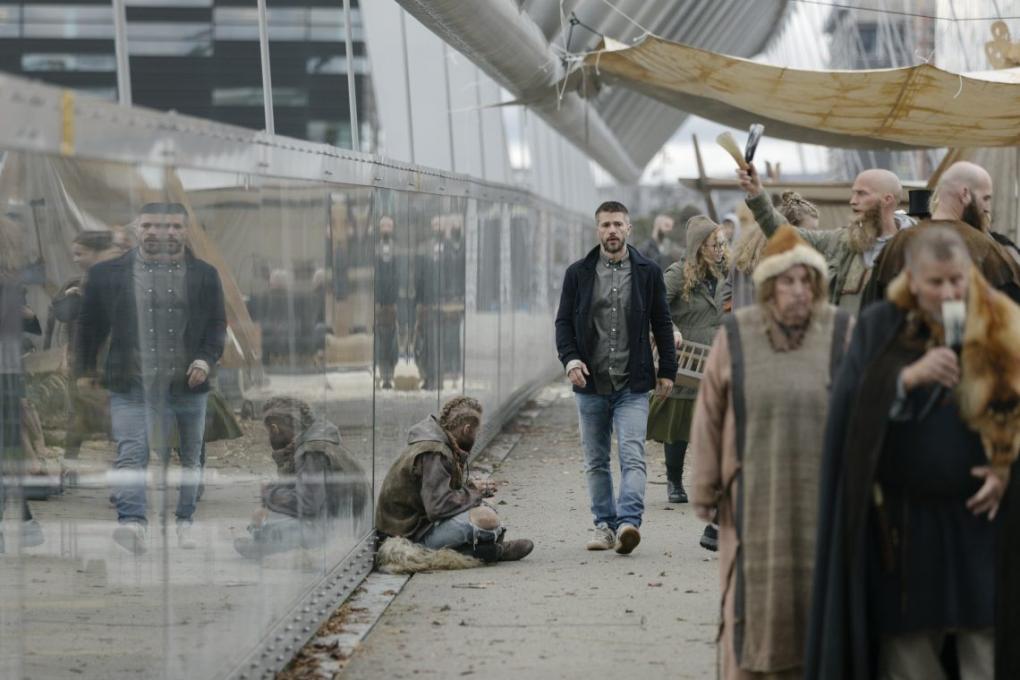
The social tensions unleashed by the arrival of these timeigrants play a major role in the show. The writers have a lot of fun playing with politically correct vocabulary; when the police chief uses the word “Viking” to describe Alfhildr during a radio interview, he is politely told that “the V-word” isn’t allowed anymore and the correct phrase is “people of Norse descent.” However, while the series pokes fun at liberal shibboleths, the major critiques are levelled at nationalistic right-wing discourses, which encourage violence under slogans like “Norway for Nowadays People.” Such arguments are instantly recognisable, but the fantasy premise allows the series to undercut nationalism in interesting ways.
In an essay on the Finnish fantasy author Johanna Sinisalo, Andrew Nestingen argues that her incorporation of figures from Norse folklore into the present helps “give form to an idea of diversity that displaces the logic of identity on which the nation as instituted is founded” (2008: 159). Nationalists may reject immigrants, but can they reject timeigrants, who come from the same land? One cannot argue that Vikings have no place in Norwegian culture without undermining the very idea of that national culture. Interestingly, beforeigners flip nationalist arguments back at their opponents by arguing that they were here first. It is the beforeigners who feel that their traditional land has been changed beyond recognition, and so the shieldmaidens Alfhildr and Urd lament how Christianity defeated the Norse gods and now there are churches everywhere. The final episode of the first season begins with a short video of an inclusive, modern Norway being screened to a new group of beforeigners, who are less than impressed with the idea of gay marriage. These arguments for the primacy of “we were here first” reach their logical conclusion with the prehistoric villain Navn Ukjent, who describes how he was the first person ever to settle in Oslo, which he implies gives him the right to do whatever he wants. If nationalist arguments about the primacy of original cultures over newer arrivals were to hold, then Navn Ukjent is correct and Oslo should belong to him, while Alfhildr and Urd would have the right to burn every church in Norway to the ground. Obviously, this would be unacceptable, but the only way to explain why is to dismantle the argument for primacy on which anti-immigrant rhetoric is founded.
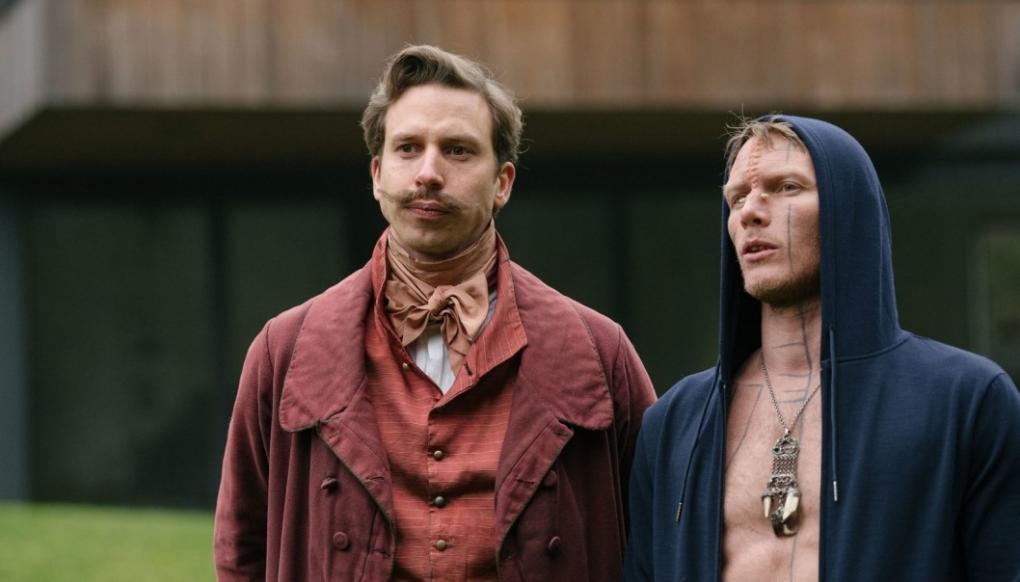
Beforeigners thus indicates how New Nordic Magic integrates contemporary social concerns without undermining the quality of the fantastic universe. As Michael Saler argues, “Imaginary worlds… have trained their inhabitants to question essentialist interpretations of the world” (2012: 21). Andrew Nestingen sees this question as lying at heart of both the crime and fantasy genres in Scandinavia: “Who are the people that make up the nation, and what is their relation to those seen as Others with whom they interact inside their borders and beyond?” (2008: 6). By making those Others into figures from the historical and mythical past, Nordic fantasy undercuts arguments that they should go back where they came from, because this is where they came from. In this way, fantasy continues in the PSB tradition of making dramas that meaningfully contribute to social debates.
Conclusion
While Nordic fantasy is not new to the screen, the rise of streaming services has shifted the horizon of possibility for producers in the Nordic region, offering new opportunities to those who can find the sweet spot in the glocalisation framework between international appeal and local distinctiveness. Genres offer accessible engagement to international audiences by providing familiar story patterns and experiences, while local distinctiveness promises originality and invention beyond the usual Hollywood tropes. In this context, New Nordic Magic is emerging as a significant development. While any definitions offered now are bound to be tentative, Beforeigners offers some intriguing indications of signature elements that can also be seen in series and films such as The Rain, Ragnarok (2020), Border, and Equinox (2020). Although the fantasy genre typically offers escapism, a more accurate description of Beforeigners and other New Nordic Magic series may be that they re-enchant the everyday. Like the Scandinavian crime genre, they suggest mysterious depths beneath the placid surface of Nordic society, wellsprings of magic that may spontaneously erupt into our world and transform it into something other. These wellsprings of magic often have their source in Scandinavian history and mythology, reawakening a mythical past in an otherwise realistic present. The iconic visuals and tropes of Nordic Noir, while not an essential aspect of New Nordic Magic, can be deployed as the realistic background against which the fantastic emerges, using audiences’ familiarity with one genre to heighten the defamiliarisation created by the fantastic element. In this kind of set-up, fantasy is achieved not through expensive CGI spectacles but through clever use of production design, costume, acting, and sound, inserting singular elements of fantasy in an otherwise realistic setting. Finally, the Scandinavian PSB tradition of double storytelling continues to exert a strong influence, with a desire not simply to offer escapism but to address real social issues through fantasy, a current that flows more strongly through New Nordic Magic than through its Hollywood equivalent. With its intriguing fusion of sci-fi, crime drama, Norse mythology, and comedy, Beforeigners is an indicator of both what New Nordic Magic currently is and which directions it may develop in future.
References
Abend, Lisa (2019). “The World Wants More Danish TV Than Denmark Can Handle.” In: The New York Times, 14/12.
Butler, David (2009). Fantasy Cinema: impossible worlds on screen, London: Wallflower.
Gjeset Schjølberg, Ulla (2019). “Creating Languages of the Past for HBO’s Beforeigners.” In: Science Norway, 9/9.
Horst, Jørn Lier (2014). “The Secret of Nordic Noir.” In: The Hindu, 5/4.
Kääpä, Pietari (2018). “From Nordic Gloom to Nordic Cool: producing genre film for global markets.” In: Dibeltulo S., Barrett C., (ed): Rethinking Genre in Contemporary Global Cinema. London: Palgrave Macmillan.
Mittell, Jason (2009). “To Spread or to Drill?” In: JustTV.wordpress.com, 25/2.
Nestingen, Andrew (2008). Crime and Fantasy in Scandinavian Film, Fiction, and Social Change, Seattle, University of Washington Press.
“Out of Time” (2019). In: Drama Quarterly, 6/9.
Pham, Annika (2019). “Beforeigners Anne Bjørnstad on HBO’s First Norwegian Original Series.” In: Variety 23/8.
Redvall, Eva Novrup (2016). “The Concept of ‘Double Storytelling’ in Danish Public Service TV Drama Production.” In: Maras, S. (ed): Ethics in Screenwriting. London: Palgrave Macmillan.
Saler, Michael (2012). As If: modern enchantment and the literary pre-history of virtual reality, New York: Oxford University Press.
Suvin, Darko (2016). Metamorphoses of Science Fiction, Bern: Peter Lang.
Todorov, Tzvetan (1975). The Fantastic: a structural approach to a literary genre, New York: Cornell University Press.
Toft Hansen, Kim (2020). “Glocal Perspectives on Danish Television Series: Co-Producing Crime Narratives for Public Service Television.” In: Waade, Anne Marit, Eva Novrup Redvall, and Pia Majbritt Jensen (ed): Danish Television Drama: global lessons from a small nation. London: Palgrave Macmillan.
Waade, Anne Marit, Eva Novrup Redvall, and Pia Majbritt Jensen (2020). “Transnational Television Drama? Lessons learned from Danish Drama.” In: Waade, Anne Marit, Eva Novrup Redvall, and Pia Majbritt Jensen (ed): Danish Television Drama: global lessons from a small nation. London: Palgrave Macmillan.
Waade, Anne Marit (2017). “Melancholy in Nordic Noir: characters, landscapes, light and music.” In: Critical Studies in Television, Volume 12, Issue 4.
Wolf, Mark J.P. (2012). Building Imaginary Worlds: the theory and history of subcreation, New York: Routledge.
Worley, Alec (2005). Empires of the Imagination: a critical survey of fantasy cinema from Georges Melies to The Lord of The Rings, London: McFarland.
Suggested citation
Joyce, Stephen (2021), Re-Enchanting the Nordic Everyday in 'Beforeigners'. Kosmorama #279 (www.kosmorama.org).
